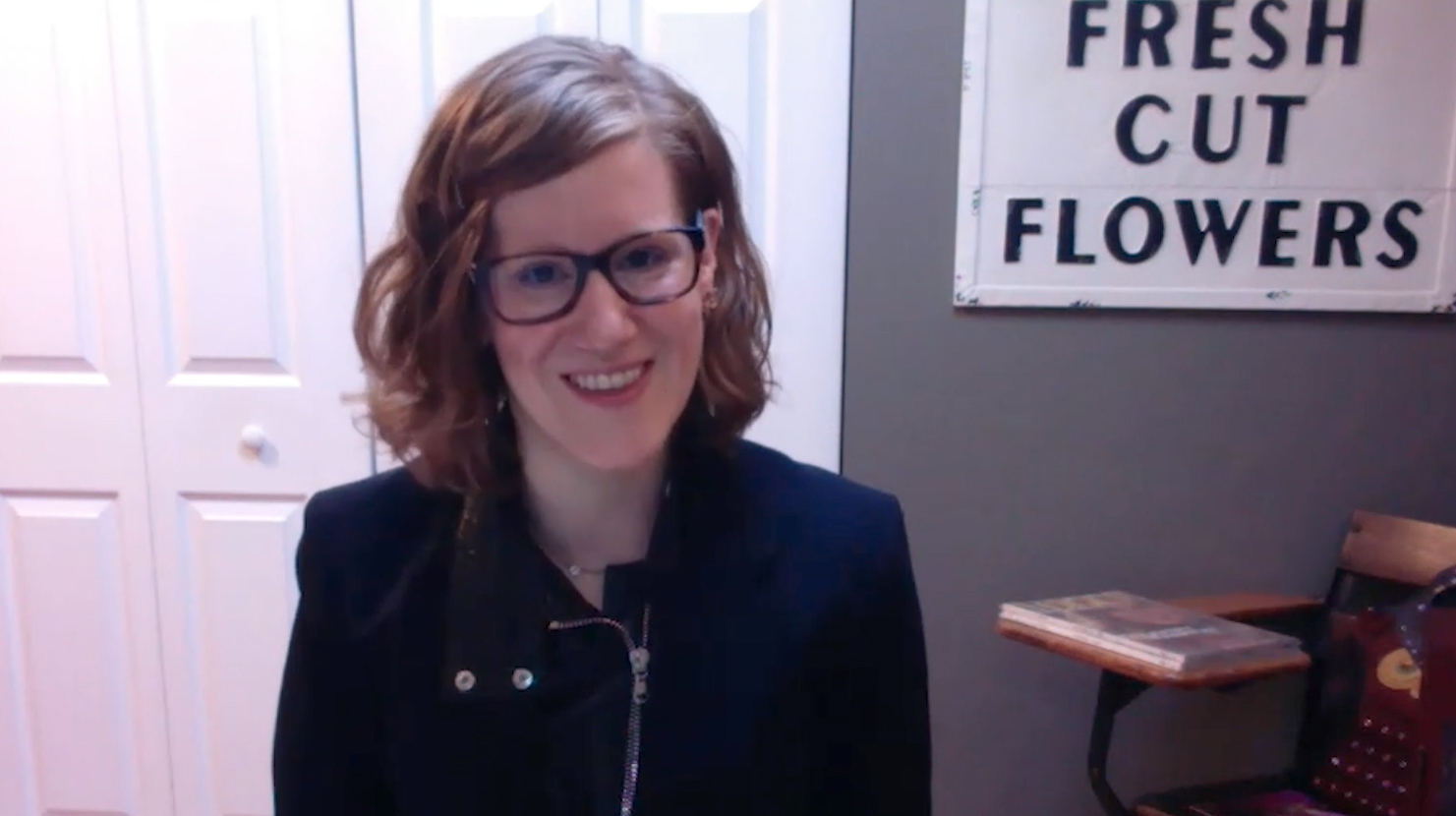Moving from "as is" to "could be"

As part of Techstars Chicago Startup Week, which celebrates the achievements of entrepreneurial communities in Chicago by bringing students, entrepreneurs, and professionals together, Stacy Neier Beran presented on design thinking and how we can make human-centered business decisions.
Below, Neier Beran shares her thought leadership from the discussion.
Moonshots, Maps, and HMW
By Stacy Neier Beran, Senior Ignatian Lecturer
Techstars Chicago Startup Week arrived when we needed a mindset shift. The one-year anniversary of our global pandemic passed just before the weeklong event. Recognizing that we are not the people we were before the pandemic, I designed Moonshots, Maps, and HMW: Mark the Move from As Is to Could Be to share a three-part story of where we are now.
First, our story began by determining the role a moonshot mindset plays in design thinking. Second, we mapped how to bring empathy along for the moonshot journey. Finally, our story welcomed an uncertain ending by asking "How Might We" questions (HMW) that (spoiler alert!) promised no easy answers.
Moonshots in design thinking
As we imagine post-COVID culture, the "as-is" world feels like we are living in a constant state of disruption, trying to match core values to innovative - and wicked! - problems. To mark our move to what "could be" possible, a moonshot mindset primes us to put rational calculations aside. It makes space to deliberately celebrate uncertainty and divergence. Let's accentuate human-centric relationships that need equal parts being and knowing, not solely doing default autopilot decisions.
A moonshot is what you are striving to change or a challenge that grips your head, hands, and heart. Re-think the last time you felt that tension-filled tug. It's the challenge that unlocks space for design thinking. Design thinking was built for moonshots.
Let's explore what the thinking in design thinking could feel like. Imagine the last time you read a job or assignment description that highlighted critical thinking skills. How might you concretely describe what makes your "critical thinking" so critical? Enter design thinking, where the process welcomes how to think, not what to think.
Multiple schools of thought about design thinking co-exist. Is design thinking a mindset, a method, or a process? Design thinking aligns with moonshots through its signature combination of cognitive, organizational, and strategic perspectives, inviting empowered groups of stakeholders to engage in innovative relationships. Consider design thinking as need-finding through empathy that leads to innovation.
To get to the moon, bring an empathy map
Moonshots need maps. Because design thinking amplifies needs-finding, empathy maps generate whole person perspectives that represent all stakeholders and their relationships with all life on our planet. Empathy maps identify what people say, think, feel, and do; they explore people's relationships with pains and gains.
To practice empathy in design thinking is to deliberately encounter assumptions about what actually matters to people and their relationships, not what businesses perceive matters.
Consider an empathy map like an matured game of Mad Libs, where we fill in the open unknowns in a human-centered story. What relationships manifest in an empathy map? What themes and clusters of human experience reveal actual needs? In short, when we map for empathy, we fortify humanity in design thinking.
How might we ... discover beauty?
Finally, design thinkers may converge moonshots and maps into How Might We (HMW) questions. Each letter takes an essential role.
- How evokes variety; how confirms that multiple solutions hold potential.
- Might reads with optimism, a signal for a more vibrant way forward.
- We is a rally cry for collaboration.
To be human-centered, we need to bring our whole selves & design with (not for) all stakeholders as whole persons. A HMW question, therefore, marks the move from as is to what could be.
So, how might we continually mark our moves in 2021? My curiosity about the role design plays in Ignatian business education reminds me that beauty shines through where a messy HMW question appears. I've observed design-thinking and human-centered design are mostly offered for graduate students and students in transdisciplinary fields.
In my grandest moonshot, we could inspire the next purpose-driven generation of designers earlier and in unexpected courses.
Dive deeper into design thinking
To learn more about design thinking, Neier Beran suggests the following resources:
- Relationship design from Salesforce →
- How Might We statements →
- Empathy mapping →
- Enterprise design thinking →